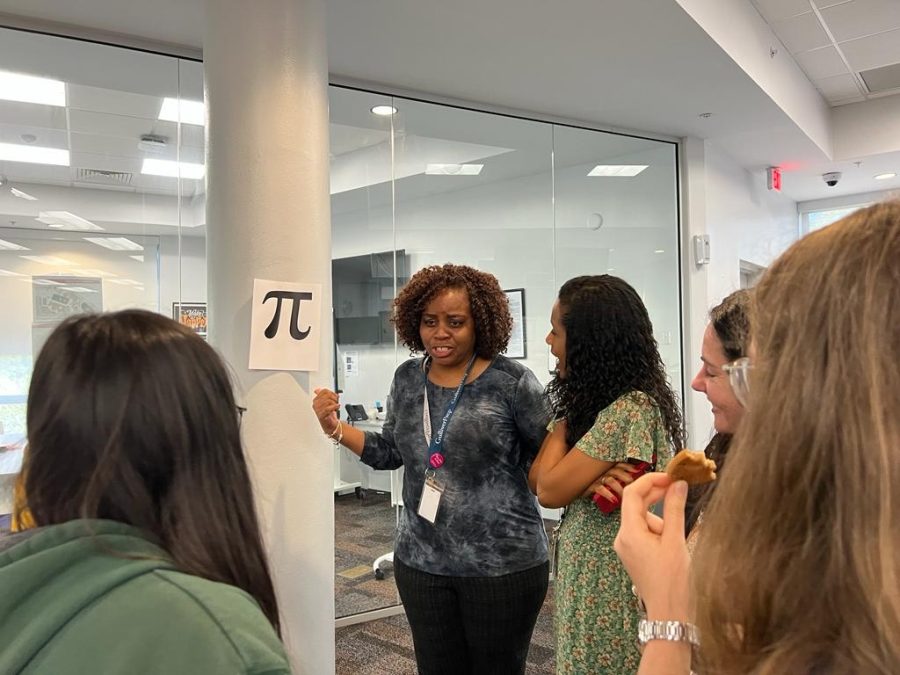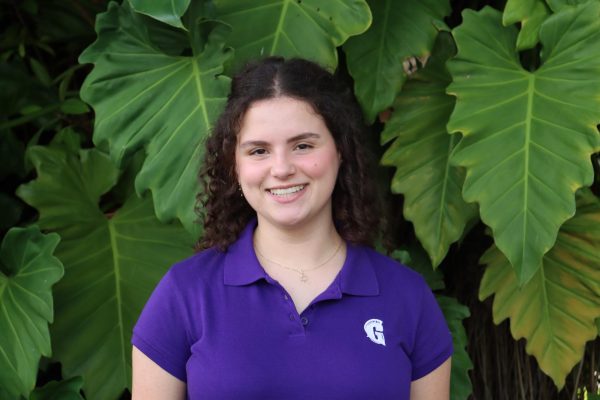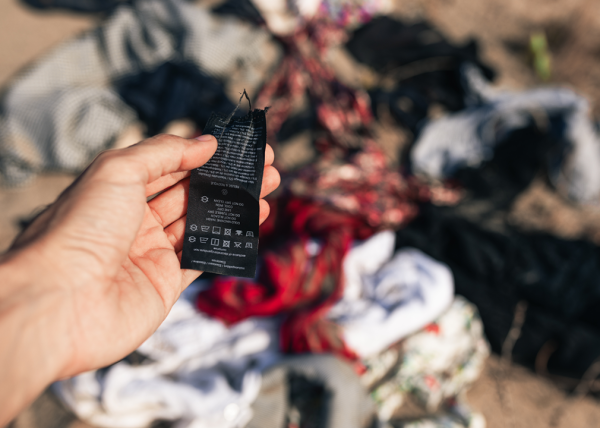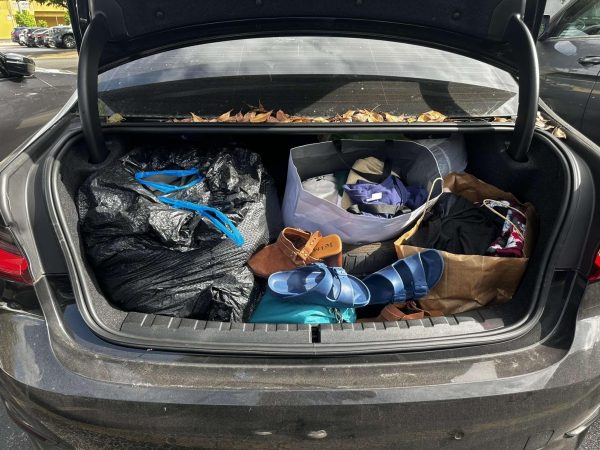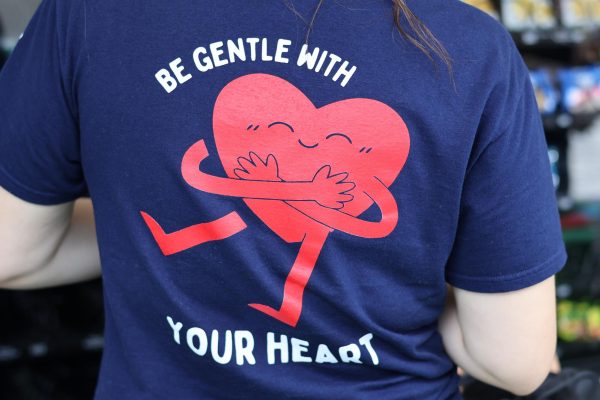The Importance of Discussion in Fostering Community and Understanding
Faculty and students gather around a picture of pie, a mathematical symbol. Before the discussion, groups talked about a certain symbol taped to the wall and discussed their meanings and connotations. Other symbols discussed included a piñata, the Nike swoosh, and a swastika.
December 1, 2022
The Nike swoosh, McDonald’s arches, a Christmas tree, a cross, the swastika: Each symbol holds potential. Whether that potential is good or bad changes depending on who you ask and these answers are bound to change over time. In a recent discussion hosted by the Jewish Student Union (JSU), what was initially a discussion about hate turned into a discussion about the power symbols hold. Ultimately, however, this discussion was a step towards fostering a more empathetic community.
During the discussion, both students and faculty members spoke about their personal relationships with symbols, specifically religious ones.
“I’ve never worn a cross. I choose not to wear a cross for reasons of not trying to be like everyone else. It’s a symbol people use just to wear as jewelry and I look at it as a bigger thing than just jewelry,” said junior Jack Gonzalez-Whitehouse who’s also a part of the Embrace Christian Culture Club but attended JSU’s discussion nonetheless.
On the other hand, junior Avery Simon shared that even though she doesn’t wear a Star of David, she embraces her religion with a simple red string tied around her wrist which she was given when visiting the Kotel in Israel this past summer.
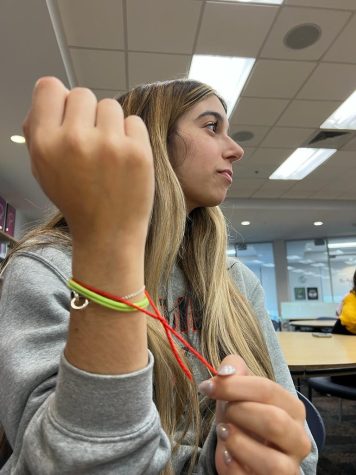
Discussions like the one JSU held are vital to empathy and understanding on campus, to a strong and safe community many call home. Hate exists no matter what so how can we as a school become more tolerant and accepting? This is why it’s important that culture clubs across campus begin to host discussions like that of JSU’s.
“The more of these kinds of events we can do where you just bring people together to talk about something specific, the better it’s going to be because then it really brings people together,” said Jonathan Schoenwald, Assistant Head of School & Upper School Principal.
The importance of events like this one are especially prevalent because even with holiday cheer at every corner, there’s still hate in the world nearly everywhere one looks. The recent shooting at Club Q— an LGBTQ+ bar in Colorado— and the everlasting antisemetic occurrences occurring every week stand testament to this.
We should take this holiday season as a period of reflection and ask ourselves how we can foster a community where our differences are acknowledged and celebrated, where individuals feel comfortable to express themselves with whichever symbols they choose.

